4 Weather Activities for Preschoolers
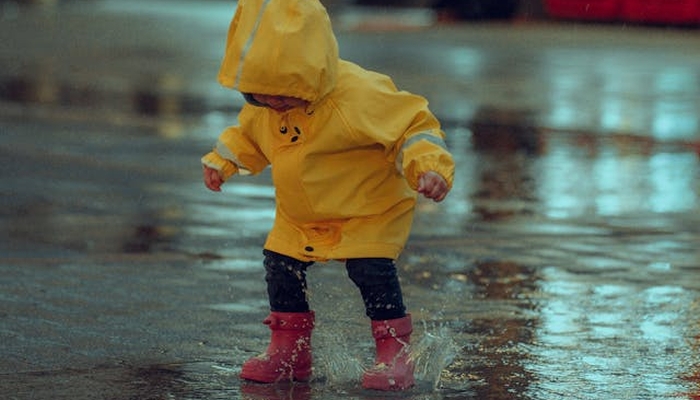
- Doing weather activities with your preschoolers will help them understand weather patterns and season changes.
- Activities can incorporate elements like sensory play and fine motor skills development.
- Weather science activities are perfect for classroom teaching or at home, making learning about weather a fun and educational experience.
Preschoolers are naturally curious about what they see. Whether they notice shadows or get excited about the rain, I’m sure your little one has also asked a million questions about these fascinating wonders before.
Creating weather activities for preschoolers is not only fun but also incredibly educational. Through play, you can help your child better understand the natural world, encourage curiosity, and build skills.
Jumping into puddles on a rainy day or watching your breath form tiny clouds in the winter should still be on your list, but these four weather activities for preschool will definitely also keep your preschooler entertained and learning.
Activity 1: Rainy Day Wonders
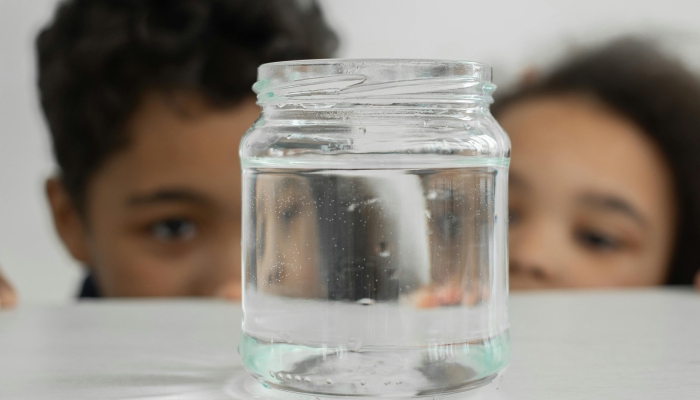
This hands-on rainy-day activity will teach your child about the weather while improving their cognitive and fine motor skills.
What You Need:
- Large glass jar to serve as a rain gauge
- Ruler
- Permanent markers
- Tape
- Scissors
Optional Materials:
- Waterproof construction paper to create a funnel
- Rubber bands to hold the funnel in place
Preparing for The Activity
- Place your glass jar on a sturdy surface and insert the ruler inside it, ensuring the zero mark is at the bottom.
- Use tape to secure the ruler along the jar.
- Use the permanent marker to make measurement lines on the outside of the jar. Mark each inch or half-inch, depending on your preference.
- Once your markings are complete, remove the ruler.
Optional:
- Cut your construction paper into a circle and fold it to create a funnel shape. This will help direct the rainwater into the jar more efficiently.
- Secure the funnel to the top of the jar using rubber bands. Make sure it’s snug and won’t be blown away by the wind.
How It Works
Look for an outside spot where rain can fall directly into your jar without obstructions. Make sure your jar stands upright and is stable. Your little one can use rocks or other weights around the base of the jar to prevent it from tipping over.
Once it stops raining, take your jar inside for measurement.
Ask your child to observe the water level in the jar and use the marked lines to determine how much rain has fallen. You can record measurements on the jar or a piece of paper or start a weather journal.
Use this opportunity to discuss different weather patterns and how they affect rainfall. You can also teach your child about the water cycle and how rain forms.
Activity 2: Sunny Day Shadow Drawing
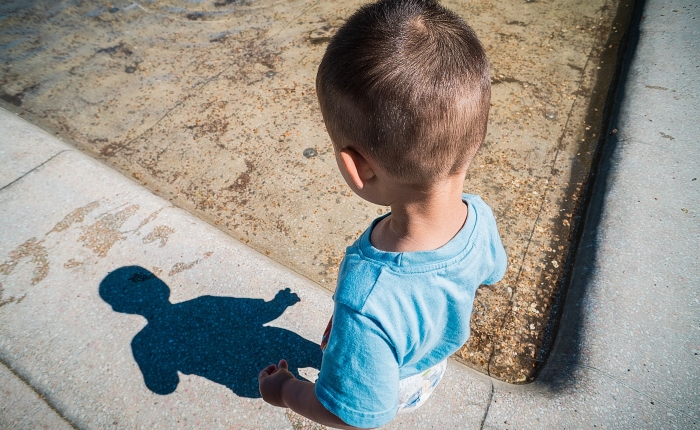
Shadow drawing is a fun way to teach your little one about the sun’s movement and how it affects shadows while practicing fine motor muscles through tracing.
What You Need:
- Different colored chalk
- Safe outdoor space where shadows can be traced
- Any objects with a distinct shape, like toys, pine cones, building blocks, etc.
- Timer or clock
Optional Materials:
- A large piece of paper if you want to preserve the drawings
- Different colored pencils
Preparing for The Activity
- Gather your paper, pencils, chalk, and objects.
- Find a safe outdoor area like a sidewalk or driveway that’s sunny.
- Place the objects on the ground where they cast clear shadows.
How It Works:
Show your little one how to trace the shadows they see. Explain that you’ll observe how it changes over time as the sun moves across the sky.
Let your child trace the shadows directly on the outside surface with chalk or place their paper over it so they can trace it there.
Use one color only for the first trace. Label the tracings with the current time.
Next, you should set a timer. Have your child return at regular intervals (e.g., every hour) to retrace the shadows in a different color. Write the time beside each new tracing.
After several tracings, you can ask your little one to watch what happened and discuss how the shadows moved. Explain that this movement is due to the sun’s position in the sky changing throughout the day.
Activity 3: Windy Weather Pinwheel

Making and observing pinwheels is a fun weather activity that’ll allow your little one to be creative and learn about the wind through play.
Many data exists on the benefits of play-based learning, like these studies referenced in the research paper The Importantce of Play-Based Learning in Early Childhood Education11. Tekyi-Arhin, O.. (PDF) the importance of play-based learning in early childhood education by Oliver Tekyi-Arhin. Research Gate. 2023. https://www.researchgate.net/publication/368926688_THE_IMPORTANCE_OF_PLAY-BASED_LEARNING_IN_EARLY_CHILDHOOD_EDUCATION_BY_OLIVER_TEKYI-ARHIN
by Oliver Tekyi-Arhin.
What You Need:
- Brightly colored construction paper to make the pinwheels more fun!
- Scissors
- Ruler
- Pencil with eraser
- Push pins
- Crayons
- Glue
Preparing for The Activity:
- Select two pieces of paper and draw identical squares on them.
- Ask your little one to decorate each square before cutting them out.
- Glue the squares together.
- Use the ruler to draw diagonal lines from each square corner, crossing in the middle.
- Make cuts along these lines, stopping about 1 inch from the center. You should now have four cuts to create eight triangular flaps.
- Carefully fold every other flap towards the center without creasing the paper.
- To secure the flaps together, place a push pin through the points where they meet in the center. You can also use a little glue here.
- While still attached to the center of the flaps, push the pin through the pencil eraser, ensuring it’s loose enough to allow the pinwheel to spin freely.
How It Works:
Go outside on a windy day and let your child hold their pinwheel up to see how it spins.
You can explain to them that the spinning pinwheel’s speed indicates the wind’s strength. Faster spinning means stronger wind.
Teach your little one to identify the direction from which the wind is coming based on how the pinwheel turns. You can also use this opportunity to talk about different types of wind and how it affects weather patterns.
Activity 4: Seasonal Changes
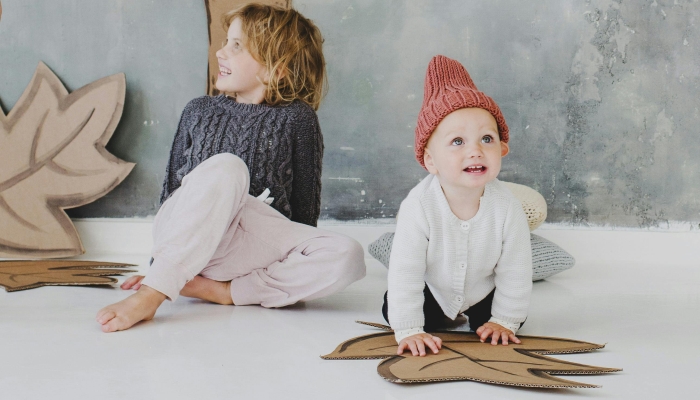
This interactive activity explores the natural seasonal changes that occur throughout the year.
What You Need:
- Scissors
- A large piece of cardboard
- Green, red, orange, yellow, pink, purple, blue and white paper
- Crayons
- Glue
- Small twigs
- Velcro
- Ziplock bag to store the seasonal decorations in
Preparing for The Activity:
- Draw a large tree shape on the cardboard. Ensure it has a sturdy trunk and broad branches to accommodate the seasonal decorations.
- Carefully cut the tree out and ask your little one to add bark details or color using crayons.
- Cut out the following from the paper sheets you have and add velcro to one side of each cutout:
- Green, red, orange, and yellow leaves
- Colorful flowers
- Fruits like apples and oranges
- Snowflakes
- Glue a few twigs to the tree for realistic branches.
- Glue velcro on the tree branches and around the base.
How It Works:
Walk your child through the four seasons while changing the decorations to match each:
- Use green leaves and colorful flowers for spring.
- Add more green leaves and fruits to the tree for summer.
- To create fall, use red, orange, and yellow leaves. You can scatter some leaves around the base of the tree to show that they have fallen.
- Use the snowflakes to show snow on the ground and branches for winter.
As you change the tree decorations, discuss each season’s characteristics with your child. Talk about how weather patterns, temperatures, trees, and plants change with the seasons. You can also teach them the importance of seasons and how they affect not just trees but animals and humans.
Spend time outside and ask your little one to identify your current season or name some similarities or differences between your season and the one you created on your cardboard tree.
Note: Incorporate sensory play by creating a seasonal sensory bin filled with leaves, pine cones, twigs, flowers, and other natural items.
Explore Weather with Hands-on Activities
Creating weather activities for preschool kids is a great way to improve their understanding of this subject. By incorporating a weather theme into their play, you ensure a fun and educational experience that’ll keep them curious and engaged.
Whether you use cotton balls as clouds, food coloring for colorful rain experiments, or set up a rain-making station to demonstrate precipitation, using hands-on activities is the perfect way to make abstract weather concepts real.
Reference
- Tekyi-Arhin, O. (2023, March). The Importance of Play-based Learning in Early Childhood Education. Research Gate. https://www.researchgate.net/publication/368926688_THE_IMPORTANCE_OF_PLAY-BASED_LEARNING_IN_EARLY_CHILDHOOD_EDUCATION_BY_OLIVER_TEKYI-ARHIN

Related Posts
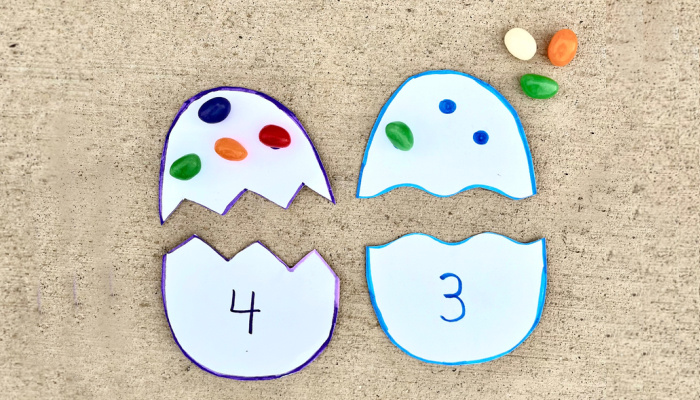
Holiday Crafts and Ideas, Math and Science
Easter Egg Number Matching Game
Counting has never been more fun than with this Easter Egg Number Matching Game. This game is easy to assemble and will surely be a hit with your little one!

Math and Science, Sensory Activities
Exploring Nature: 5 Outdoor Learning Activities for Preschoolers
Looking for things to do outside with your preschooler? These ideas for outdoor learning are easy, inexpensive, informal, and best of all, fun!

Math and Science
5 Preschool STEM Activities to Spark Young Scientists
Looking for ways to engage the young scientist in your life? Check out this guide to preschool STEM activities for some brilliant and fun ideas.